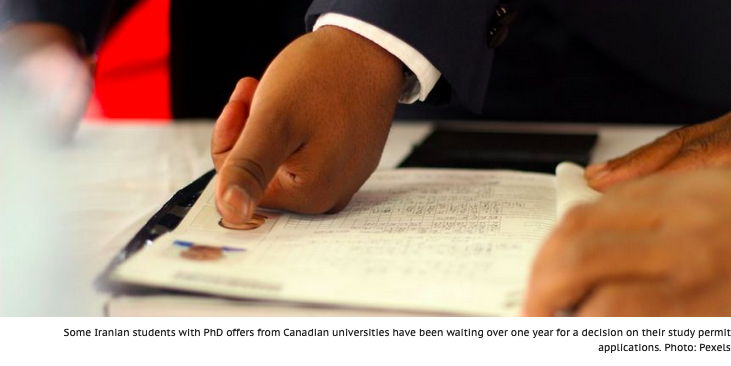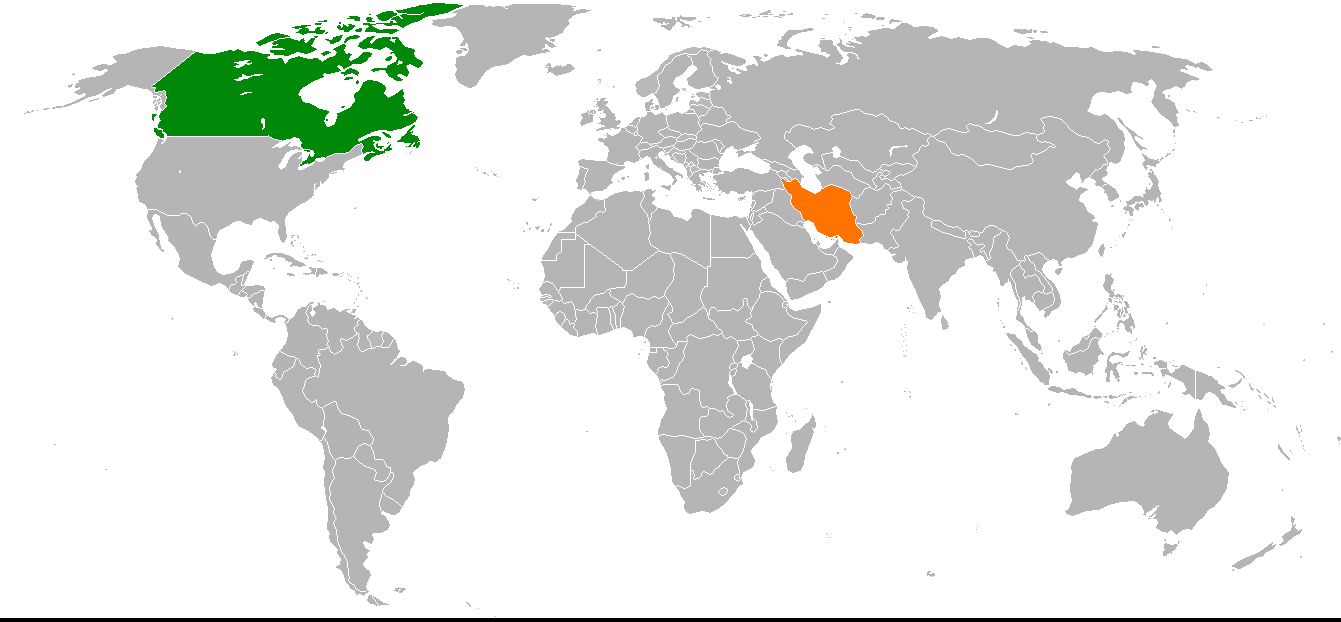September 2022 will mark the tenth anniversary of the break in diplomatic relations between Canada and Iran. The rupture did not emerge in a vacuum; Canada’s relations with Iran had been fraught for years. But it was not inevitable. The passage of the Justice for Victims of Terrorism Act (JVTA) in March 2012, changed the equation, making the diplomatic status quo unsustainable. Ten years on, the prospects of resuming diplomatic links remain remote.
Canada’s bilateral relations with Iran were set on a difficult trajectory from the earliest days of the Islamic Republic. Iran’s perception of Canada as a hostile, U.S.-dominated country was entrenched as a result of Canada’s role in facilitating the rescue of U.S. diplomats during the hostage crisis in the early days of the Islamic Republic. It set a tone that continued to resonate with the regime’s leadership through the decades that followed. As Iran’s foreign minister, Manouchehr Mottaki, put it so succinctly during a rare visit to Tehran by a senior Canadian official in 2008, “Thirty years ago Canada made a big mistake helping those American spies.”
Successive Canadian governments did little to shift the narrative. On the contrary, the list of grievances was long and expanded over the years. Human rights, Iran’s rejection of the Middle East peace process, it’s destabilizing regional behaviour, its support for terrorism and its nascent nuclear program dominated Canada’s Iran agenda.
There were periods where the relationship seemed to be moving on a more positive trajectory, such as during President Mohammad Khatami’s ill-fated reformist administration, but those moments were few and short-lived. The default position was mutual hostility, which reached its apex after the brutal murder of Montreal photo-journalist Zahra Kazemi in Tehran’s Evin Prison in 2003. Kazemi, according to the medical examiner, had been raped, tortured and killed by her interrogators following her arrest for taking photographs of demonstrations. The Canadian government temporarily recalled its ambassador in protest and the case remained a key item on a shrinking bilateral agenda in the years that followed. Canada subsequently launched and led the annual UN General Assembly Resolution on the Situation of Human Rights in Iran, with the latter becoming a yearly visible irritant for Tehran.
The arrival on the scene of President Mahmoud Ahmadinejad in 2005 and Stephen Harper in 2006 kept tensions on the boil. The Iranian president’s bellicose and offensive rhetoric, including denial of the Holocaust (and hosting a Holocaust denial conference) and his call for the annihilation of the State of Israel played into the Harper government’s perception of Iran as the most serious threat to international peace.
Iran’s decision to downgrade diplomatic ties to the level of chargé d’affaires in the fall of 2008 as a result of Canada’s rejection of three ambassadorial nominees put forward by Tehran was followed less than a year later by the regime’s suppression of the Green Movement in the wake of the disputed 2009 elections. Canada shared international and Iranian concerns about election fraud and harshly condemned the brutality of the regime’s crackdown on demonstrators and Ahmadinejad’s political rivals, which extinguished any lingering hopes for improved ties.
Things could have continued like that for years. They had already. But the ground had begun to shift. The countdown to the Canadian embassy’s closure came with the passage of the Justice for Victims of Terrorism Act (JVTA) in March 2012. Under the Act, private citizens could sue states listed under it for damages caused by their sponsorship of terrorism. Judgements ordered by Canadian courts would be paid through the proceeds received from the seizure and sale of those government’ assets in Canada (diplomatic assets were exempted). As expected, Iran and Syria were the first countries listed.
Subsequent court proceedings in the years that followed identified buildings in Toronto and Ottawa that were subject to seizure and sale, pegging their value at $28 million.
The JVTA made the continued presence of a Canadian embassy in Tehran untenable and it is no coincidence that the mission was shut on the same day that the law came into effect.
The brutal attack on the British embassy and housing compound in November 2011 had highlighted the risk. The regime did nothing to prevent the attack (and likely encouraged it) and the U.K. hadn’t seized and sold off Iranian government assets in London like Canada was planning to do. The Canadian embassy in Tehran had none of the security features the British had and which proved so ineffective in the face of a mob and a host government with such a lax approach to its obligations under international law.
Given what had happened to the U.K., keeping the Canadian embassy open as Canadian courts started seizing Iranian assets would have been a dereliction of its duty of care to staff. Closure was the only option.
But decisions have consequences. The closure had costs. Despite the fact that Canada had no relationship to speak of with Iran and the prospects for any meaningful improvement were dim, a Canadian presence in Tehran did, nonetheless, serve Canadian national interests.
Iran is a key player in a volatile region. What happens there matters. While Canada’s ability to influence Iran was (and always will be) negligible, Canada’s absence from Tehran reduced the government’s ability to fully understand Iran and undercut the credibility of Ottawa’s voice on Iran-related issues in discussions with allies and partners–something that many of them highly valued when Canada was present in Tehran. Canada became a consumer rather than a producer of information and insight on Iran.
The lack of an embassy in Tehran also negatively impacted the ability of the government to provide consular support to the thousands of Canadians who live in or regularly visit Iran. Consular support was always a challenge in Iran given the number of dual nationals in the country and Iran’s refusal to accept their Canadian citizenship. But the existence of diplomatic ties did give Canadian officials an in and Iranian officials something to think about when dealing with these individuals.
It is in crisis situations, however, that the value of having Canadian suits on the ground is most acute, as was tragically demonstrated following the shoot-down of Ukrainian Airlines flight PS752 in 2020. Days were spent in the immediate aftermath of the disaster negotiating with Iranian authorities to get Canadian consular officials into the country, rather than focusing on offering aid, information or support to survivor families in Iran and Canada. These delays no doubt added to the trauma being faced by families in the aftermath of that horrific tragedy. (That said, it is unlikely that continuing diplomatic ties would have helped Canada in negotiations with the regime in the aftermath of the crisis over issues like compensation. Canada’s key partners in this tragedy–U.K., Ukraine and Sweden, for example–all have full links and fared no better).
These diplomatic and consular deficiencies are tangible, if not well-understood, losses. It would, accordingly, be in Canada’s interest to restore diplomatic links. But reversing course will be very difficult politically. The Trudeau government tried in the early days of its first term, but negotiations led nowhere. Opponents of normalization reject the idea of “rewarding” a country that is still such a destabilizing force in the region, which continues to pose nuclear proliferation risks and which so cavalierly murders its own citizens, including by shooting down a civilian airliner.
The Trudeau government’s ill-fated efforts to restore ties likely foundered (at least in part) due to this perception, especially in the wake of the death of yet another wrongly-imprisoned Canadian–Kavous Seyed-Emami, an Iranian Canadian sociologist who had been detained in 2018 for espionage. The mysterious circumstances surrounding his death in custody recalled the murder of Zahra Kazemi 15 years earlier.
Iranian claims that Seyed-Emami committed suicide were vehemently rejected by his family and those closest to him. His death and the subsequent imposition of a travel ban on his family were deeply concerning for the Canadian government, which still had hopes of a breakthrough in talks on normalization. The case quickly became political in Canada, with the opposition accusing the government of prioritizing continued negotiations over justice for Seyed-Emami. The unanimous passage of a parliamentary motion to cease negotiations on restoration shortly afterwards illustrates the political challenge of undoing the break.
The reality, however, is that diplomatic ties between countries are not a “reward” or “endorsement” of a particular regime. They are a recognition of interests and realities. Most of Canada’s key partners share Canadian concerns about Iran and many have had their own citizens suffer at the hands of the regime’s security forces. Yet they continue to maintain diplomatic links because it is in their interest to do so. Canada applies the same approach in its dealings with other heinous regimes around the world.
Admittedly, it is politically harder to restore ties than it is to maintain them, and no doubt Iran would perceive or at least present normalization as a victory of sorts. Ideally, Canada would wait for Iran to do something right or positive and use that as a hook to restore links. A real compensation package for the families of victims of the Ukraine airlines disaster, for example, could ease the path, as would the emergence of a reform-oriented government in Tehran. Movement on the nuclear agreement might also be helpful as a sign of change (although, in and of itself it probably wouldn’t be sufficient in Canada unless a deal also prompted a move towards normalization in U.S.-Iran ties).
Sadly, none of those conditions seem likely in the short term. If negotiations on restoration ever move forward, though, Canada should seek guarantees that it would not be subject to the very restrictive conditions it had to deal with when it was last open. Iran’s routine denial of incoming staff and official visitor visas and other forms of administrative harassment coupled with its sustained refusal to approve any meetings with senior Iranian officials, ministers, parliamentarians or even university representatives seriously impacted the diplomatic mission’s ability to operate and fulfill even its most basic functions. That can’t be repeated next time (if there is one).
At the end of the day, however, no positive hook is likely to get past the principal obstacle that created this problem, namely the JVTA. Having Canadian diplomats in Tehran while the threat of future lawsuits and seizures hangs over the relationship would be as irresponsible now as it was then. Moreover, removal of the JVTA is likely a central Iranian condition for re-normalization.
But, short of a sea change in the nature of the Iranian regime, removing the JVTA would be a massive political challenge. It would be perceived as a statement by Canada that Iran was no longer a state sponsor of terrorism and the backlash would be fierce. It is unlikely any Canadian government would risk it in exchange for benefits that are not widely understood or appreciated.
The JVTA has truly handcuffed successive governments. If the Harper government had intended the JVTA to be a poison pill, it has worked. It is unfortunate that the toxin has proved so debilitating for Canadian interests.





